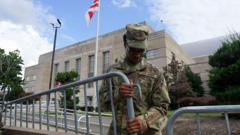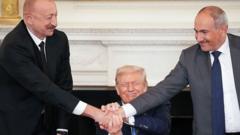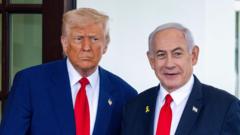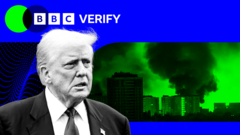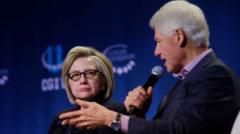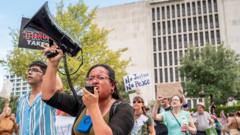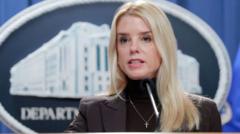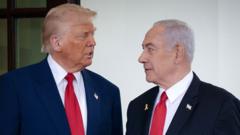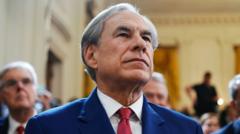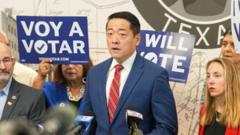In this article, we explore what executive orders are, their historical context, and their political implications as Donald Trump prepares to sign over 200 such directives upon his return to office.
**Unpacking Executive Orders: The President's Powerful Tool for Change**
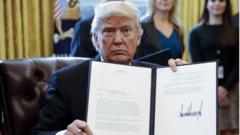
**Unpacking Executive Orders: The President's Powerful Tool for Change**
Executive orders are critical instruments for U.S. presidents to enact policy without congressional approval.
Executive orders, a significant lever of presidential power, enable U.S. presidents to impose their agendas directly on government operations without needing the approval of Congress. Donald Trump's anticipated return to the White House will see him utilize this mechanism extensively, reportedly planning to sign over 200 executive actions soon after his inauguration. These actions will include potentially controversial orders aimed at enhancing artificial intelligence initiatives, forming a new Department of Government Efficiency, releasing documents related to the assassination of John F. Kennedy, and altering military policies regarding diversity, equity, and inclusion.
The origin of executive orders traces back to Article II of the U.S. Constitution, which establishes the executive branch's authority. They can range from pivotal policy shifts—such as Trump's controversial approval for the Keystone XL and Dakota Access Pipelines in 2017—to mundane administrative duties like President Barack Obama’s directive for holiday schedules.
Historically, executive orders have been issued in times of urgency, including wartime situations. For instance, President Franklin D. Roosevelt's 1942 order led to the internment of Japanese Americans during World War II. Similarly, President Biden’s first moves included rejoining the Paris Agreement to combat climate change, a direct reversal of Trump’s policies.
While executive orders circumvent the legislative process, they can be challenged both legally and politically. Congress retains the power to pass legislation to negate an executive order, though the president possesses veto authority over such laws. The sensitivity around these orders lies in their capability to bypass checks and balances that are typically provided by congressional approval, leading to legal battles as witnessed during the Obama and Trump presidencies.
To date, Franklin D. Roosevelt holds the record for the most executive orders, issuing over 3,700 orders during his tenure. In contrast, recent presidents like Biden, Obama, and Bush have signed significantly fewer—160, 277, and 291 orders, respectively.
As Trump readies to begin his second term, the landscape of executive orders is set for another transformation. His commitment to signing sweeping directives covering immigration, social policies, and environmental regulation will continue to shape the conversation around presidential power and its implications for the fabric of American governance.
The origin of executive orders traces back to Article II of the U.S. Constitution, which establishes the executive branch's authority. They can range from pivotal policy shifts—such as Trump's controversial approval for the Keystone XL and Dakota Access Pipelines in 2017—to mundane administrative duties like President Barack Obama’s directive for holiday schedules.
Historically, executive orders have been issued in times of urgency, including wartime situations. For instance, President Franklin D. Roosevelt's 1942 order led to the internment of Japanese Americans during World War II. Similarly, President Biden’s first moves included rejoining the Paris Agreement to combat climate change, a direct reversal of Trump’s policies.
While executive orders circumvent the legislative process, they can be challenged both legally and politically. Congress retains the power to pass legislation to negate an executive order, though the president possesses veto authority over such laws. The sensitivity around these orders lies in their capability to bypass checks and balances that are typically provided by congressional approval, leading to legal battles as witnessed during the Obama and Trump presidencies.
To date, Franklin D. Roosevelt holds the record for the most executive orders, issuing over 3,700 orders during his tenure. In contrast, recent presidents like Biden, Obama, and Bush have signed significantly fewer—160, 277, and 291 orders, respectively.
As Trump readies to begin his second term, the landscape of executive orders is set for another transformation. His commitment to signing sweeping directives covering immigration, social policies, and environmental regulation will continue to shape the conversation around presidential power and its implications for the fabric of American governance.


